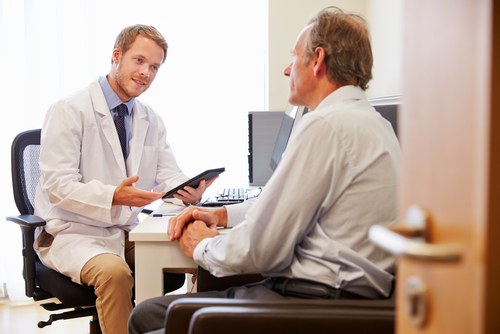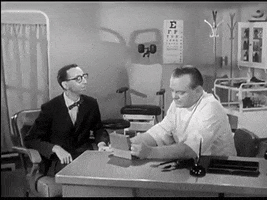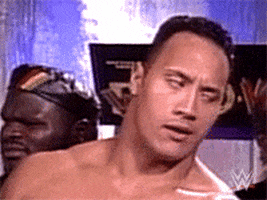Do you think you’re a healthy individual who takes care of every part of your body? Eye health is a vital aspect of overall health that often gets overlooked.
This may have to do with the fact that many eye conditions work slowly. Often they gradually cause you to lose visual acuity.
Many of these eye conditions also cause irreversible, permanent damage. For example, some, like glaucoma, present little to no symptoms until it has damaged your eyes.
If you want to protect your vision, you need to start by getting help from a professional.
Eye exams are straightforward yet detailed tests of your eye health. Some of the tests performed during them depend on your risk factors for certain diseases.
In any case, it is invaluable to create the habit of getting your eyes checked often. Keep reading to learn more about eye exams and why you should get one this fall.
Early Detection Can Save Your Sight
Glaucoma may be the best example of why early detection is critical. But it is by no means the only example.
Many eye conditions and diseases can cause permanent vision damage. Early intervention can save your eyesight, but only after a professional diagnosis.
An eye doctor can identify current problems with your eyes. They can also inform you of particular issues that you are at an elevated risk for.
Things like diabetes, smoking, sunlight, and a poor diet all can elevate your risk for eye problems. Other things out of your control, like family history, ethnicity, and age, can also put you at risk.
Learn Prevention Methods
Early detection can save you from a lot of damage, so you should routinely see your eye doctor. But there’s no coming back from permanent vision loss.
Aside from seeing your eye doctor, you should focus on preventing issues in the first place. When you see your eye doctor, they will discuss ways to avoid problems you are at risk for.
Eye Health Indicates Overall Health
Your eyes are one small part of your body. But, problems inside them can indicate other health problems you may be unaware of.
Going to your eye doctor is not a substitute for going to a general physician for a physical. But it can give you more information on what is happening with the rest of your body.
Your eye doctor can notice an issue in your eyes that is a side effect of a more significant condition in your body. An eye exam can potentially save you from more than just harm to your eyesight.
Ongoing Monitoring
Some problems aren’t noticeable or curable in a single visit. By making eye doctor visits a habit, you can create a data bank on the health of your eyes.
This growing collection of data makes it possible to track changes in your eyesight. Any significant change in vision could be indicative of an eye problem.
Sometimes vision changes happen so gradually that you don’t notice the difference until it’s too late. Data points from previous exams make it easier to see if your eyes are getting damaged.
What to Expect During Your Visit
During a comprehensive eye exam, your eye doctor will ask you questions about your health and put you through several tests. There are too many tests and exams that you could undergo to finish them all in one visit.
So your eye doctor will test your vision based on your risk factors, current vision problems, and how recently your last exam was. A few tests you will undergo at a routine eye exam include:
- Chart exam
- Refraction test
- Ocular motility
- Glaucoma test
These tests cover the basics of what must be checked for during an eye exam. They work to prevent harmful diseases and loss of visual ability.
Chart Exam
A chart exam is one of the most important and iconic vision tests. It tests your visual acuity.
A chart exam uses a chart with rows of letters that increase in number and decrease in size as you go down the page. Each row gets numbered based on the size of the font for that row.
To do the test, you sit or stand twenty feet away from the chart. Then you read each letter until you can no longer make them out distinctly.
People with good vision should be able to make it to the size twenty row. Reading the size twenty row from twenty feet away is where the term 20/20 vision comes from.
Refraction
A refraction exam is a more detailed look at your eye’s ability to focus. Your eye doctor will have you look through a machine that rapidly switches lens powers. While they change the lenses, you describe which ones work better for you.
Eventually, you will narrow it down to the best setting. This exam gives your eye doctor a clear idea of the refraction going on in your eyes.
Ocular Motility
It isn’t enough to test just the focusing power of your eyes. To maintain eye health, it is also essential to see how well they move and track objects.
Your eyes should be able to track movement and work together to provide quality vision. Poor eye motility can lead to eye strain and affect your quality of life.
Glaucoma
Glaucoma damages the eye by causing the internal pressure or IOP of your eye to spike. Increased IOP presses on your optic nerve, and if it pushes hard enough, it can damage your optic nerve.
Optic nerve damage results in vision damage and can potentially cause complete vision loss. To test for glaucoma, your eye doctor performs tonometry.
Tonometry uses a machine to measure your IOP. Usually, it involves hitting your eye with a puff of air and then measuring the resistance in your eye.
The machine automatically records the level of resistance. Then it translates that resistance into a number representing your IOP.
Tracking your IOP over time is one of the best ways to diagnose glaucoma. Often it impacts your eyesight without you knowing it. By observing your IOP over time, your eye doctor can tell if you have glaucoma.
Comprehensive eye exams are vital for maintaining your vision. Schedule an appointment at Ellis and Laser in Sacramento, CA, to ensure your eyes are healthy!





